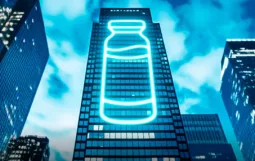Ensuring the delivery of vaccines in record time
This oped was originally published on in the Down to Earth (16-30 June 2021 Edition).
Scarcity of raw materials and trade barriers could dent hopes for 10 billion vaccines produced by end of 2021
Back in March 2020, vaccine innovator companies started working on how they would set up manufacturing and the supply chains produce their vaccines candidates once they were approved. One of the reasons for the speed at which the world has been able to produce COVID-19 vaccines in the billions in a matter of months, was the fact that production and supply teams worked in parallel with the scientists in the labs, not knowing yet whether their vaccine would make it to the finishing line – something that has never been done on such a scale before.
Their efforts are clear to see. At the end of this month, three billion COVID-19 vaccine doses will have been made by the vaccine manufacturing four powerhouses: China, the European Union, the United States and India. By the end of 2021, it is estimated that over 10 billion doses will have left the production lines.
As part of the manufacturing preparations, the first of today’s 300 collaborations were being drawn very early on. Today, cooperation is taking place in many parts of the world: in USA, China, EU and India, but also South Africa, India, Brazil, Argentina, Malaysia, Turkey, Thailand, Egypt, Mexico, Indonesia, Iran. Getting collaborations up and running takes time. Aspen Pharma in South Africa and Johnson & Johnson agreed to work together in November last year for the fill and finish process to put the vaccines into vials. Aspen plans to have the vials leaving the manufacturing lines at the end of June.
Another early preoccupation involved checking the supplies of raw materials and the equipment needed, as well as finding and training the staff to ensure the smooth running and the necessary quality checks. The numbers are telling. It takes 280 components to make the Pfizer-BioNTech mRNA vaccine, involving 86 suppliers located in 19 different countries; these materials need to reach three different manufacturing plants, where the vaccines will go through a manufacturing process that involves 50,000 production steps; and at least 70 quality checks. Now multiply that by the number of vaccines that have been approved.
Collaborations to make vaccines is not easy. We have seen that even seasoned partners experience difficulties. Emergent BioSolutions who were helping with the production of J&J vaccines threw away millions of doses, because they did not meet the necessary quality control.
We have been warning since March this year that some crucial raw materials are in short supply. The late delivery of the bioreactor giant plastic bags can set back production by weeks, delaying the delivery of millions of much needed vaccines. In other cases, there are difficulties in finding the skilled technicians needed to oversee the production and check the quality and safety through the process. In addition, trade barriers are hindering the flow of these goods, the vaccines themselves. We all recall the heartfelt tweet by Adar Poonawalla of the Serum Institute: calling on @POTUS to lift the embargo of raw material exports out of the U.S. so that vaccine production can ramp up.
We have been deeply concerned that despite our efforts, COVID-19 vaccines currently are not equally reaching all priority populations worldwide. We have laid out five steps that urgently need to be addressed. We are calling for dose sharing. We commit to support by making any uncommitted doses available. We backed up our words with action within days, with 3,5 billion extra doses pledged by major vaccine manufacturers at the G20 Health Summit in May.
We are committing to continue efforts to optimize production. The supply situation remains challenging for critical input supplies, such as bioreactor bags, single-use assemblies, cell culture media, filters, lipids, and vials & stoppers. Vaccine innovators will of course continue to work closely with their suppliers to avoid disruption where they can. But in the case that suppliers might have stocks that have not yet been tapped for whatever reason, we trust that the COVAX Supply Chain and Manufacturing Task Force can direct its immediate attention on creating a voluntary partnership to improve visibility of the supply of manufacturing input and to facilitate the establishment of global trade processes for the free movement of raw materials, vaccine components, and assay reagents.
We have learnt so much over the past 18 months and we will definitely be learning more as we hope to hit the target production to meet the world’s needs. For innovative bio-pharmaceutical companies the work is far from over. We have our work cut out for us. We continue to prioritize the development of new COVID-19 vaccines, including vaccines effective against new variants, looking for new formulations for easier and longer storage. For this work to continue, we urge governments to guarantee unhindered access to pathogens of any COVID-19 variants to support the development of new vaccine and treatments. If this does not run smoothly, it will impact booster development and it will hamper the WHO’s ability to respond to the next seasonal influenza viruses. In the last couple of days, we have joined the G7 future pandemic preparedness partnership to achieve a moon-shot target of 100 days to develop a vaccine in the case of a future pandemic. Cutting down from the already historic 326 days to bring a first COVID-19 vaccine.
Author






